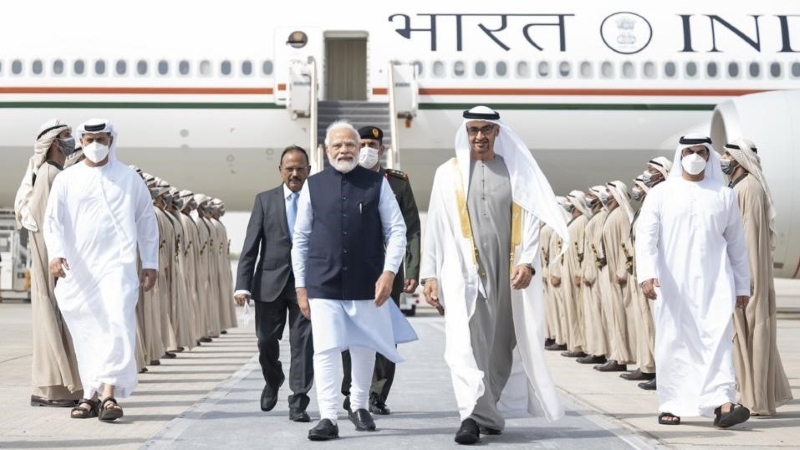
India, The Rising Power, Is Seeking Oil From The Middle East And Russia
By Ariel Cohen, Alum of The Fletcher School of Law and Diplomacy at Tufts University
India, the world’s most populous country, sourced 52.7% of its oil imports from the Middle East. India’s volume of oil consumption increased – doubling since 2012. The world’s most populous democracy is searching for ways to satiate its oil hunger, and it has decided to follow the well-worn path of engagement with the Middle East.
India’s increasing relevance as a counterbalance to China, has resulted in the India, Israel, UAE, USA agreement nicknamed I2U2. I2U2 aims to work on six areas of cooperation with the underlying goal of undercutting the energy-based influence of Iran and Russia, and China’s increasing global ambitions, while circumventing Saudi Arabia’s role as a primary supplier. This is to be done by involving more actors in previously rigid geopolitical systems and the development of new LNG sources in the Persian Gulf, such as Qatar and Oman.
India’s entry into West Asian and Middle Eastern affairs and markets may slowly change the international system. It’s track record in Afghanistan and Central Asia suggests that its involvement in the Middle East will be tentative at first.

Some renewables activity is rising domestically. One such project is the hybrid energy project which would be established in Gujarat producing 300 megawatts of solar and wind capacity with a battery energy storage system. This project will involve collaboration between fellow I2U2 members and their respective private sectors.
I2U2 is not just a stopgap while India builds domestic energy production. I2U2 is already reshaping India’s consumption patterns. From December 2021 to March 2022, Indian crude imports from Iraq remained stable, while Saudi crude purchases fell, and Emirati oil surged in its place. Despite these changes, Saudi Arabia still accounts for 15% of Indian oil imports. Saudi Arabia has not idly accepted its marginalization. Recognizing that it cannot be replaced, yet, it has increased oil prices for its Asian customers. In an expected move, Saudi Aramco raised Arab Light Crude for Asian customers in July by $2.80 per barrel above the regional benchmark.
While I2U2 is facilitating growing cooperation between India and the Middle East, this relationship is not consolidated. A spokesperson of India’s ruling Bharatiya Janata Party (BJP), Nupur Sharma, made controversial remarks about the Prophet Muhammad recently. 15 Islamic nations, including the UAE, condemned these remarks and many Muslim clerics called for a boycott of Indian goods. To protect its growing partnership with the Gulf States, the BJP suspended Sharma and expelled party’s New Delhi spokesperson Naveen Jindal, who made these statements.

This budding relationship with the Middle East has recently been overshadowed by India’s ties with Russia. From April until June 2022, the proportion of Indian crude oil imports from Russia increased by 14%, overtaking Saudi Arabia. Currently, 22% of India’s imported crude oil is from Russian producers. Despite Russia’s fertilizer export ban, India’s fertilizer imports from Russia increased by 20% between April-June replacing the fertilizer imports from Saudi Arabia, Oman, China, and Canada.
The surge in Russian imports has not yet proved to be a long-term commitment. In the recent four-week period Russian crude flows to India dropped by 18,000 barrels a day, prompting fewer Russian oil purchases in the future. However, Indian buyers have currently outbid Chinese state-run Sinopec for Russian seaborne oil, highlighting their need for Russian oil now. Washington watches wearily whether this year’s spikes in Russian oil imports will prove to be a long-term oil trade reorientation and if so, will it have significant geo-economic effects.
Ultimately, India finds itself weaving a complex web of geopolitical relations by balancing I2U2, Russia, China, and Saudi Arabia. By diversifying its relations with the Middle East, the US, and Russia, India is situating itself in a comfortable position between all parties. This comfort will only continue so long as India can continue to carefully balance its development of long-term Middle Eastern energy sources with the short-term imperatives of buying discounted Russian oil. For the West the quandy is clear but answers are not: how do you satiate the world’s largest democracy’s appetite for oil without empowering one adversary or another?
This piece is republished from Forbes.
